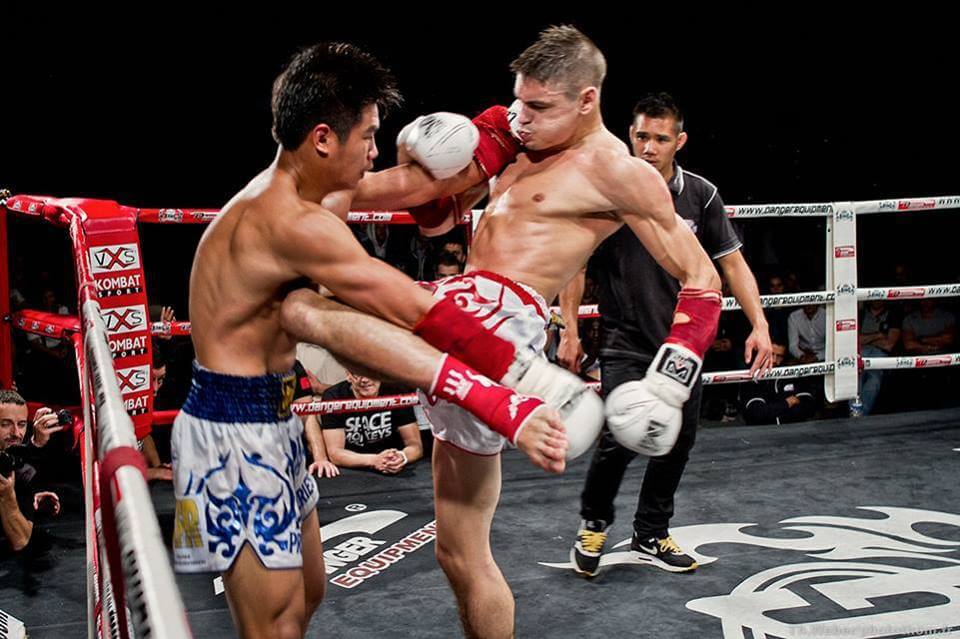Know all myth about History and Style Guide of Muay Thai.

You see, it doesn’t just focus on punches; nor does it simply focus on shin-connecting kicks. Rather, elbows, knees, and more are combined with the aforementioned with one idea in mind.To defeat one’s opponent.And oh boy, are Muay Thai practitioners good at that.
Muay Thai History
The history of the Asian martial arts styles are often difficult to uncover due to the sheer age of them and what can best be summarized as a lack of record keeping. Muay Thai is no different in that regard. Some theorize that it came from China when the Tai people immigrated to the Southeastern portion of Asia.
Others believe that it emanated from Khmer martial arts like Pradal Serey, and some of the similarities between the two fighting styles would seem to strengthen that argument. The most popular theory is that like most martial arts styles with a significant history, Muay Thai was influenced by several factors including the Khmer or Cambodian martial arts styles, as well as those brought from China during immigration. Regardless, it is accepted that Muay Thai emerged from an ancient Siamese or Thai fighting style called Muay Boran (ancient boxing), which was likely influenced by the aforementioned as well as Krabi Krabong (a weapons based Thai martial art).What is certain is that during the early stages of Thai history there were a significant numbers of invaders which prompted the need for their people to learn how to defend themselves in hand-to-hand combat.
Muay Thai The Sport
What at first was almost exclusively about self-defense, eventually morphed into a sport. Along with this, Muay Thai competitions came to the forefront during the Sukothai era (1238-1377), a time when competitors began earning money for their fighting prowess. Initially, Muay Thai boxers or competitors fought without the use of gloves (strictly a striking competition- no grappling).
Strikes to the groin and headbutting were acceptable, weight classes were ignored, and the ring generally comprised wherever you were at the time. At some point, rounds came to be implemented. What’s more, during the Sukothai era Muay Thai became a way to impress the Thai nobility, which could lead to advancements in life.
The Ayutthaya Period
During the Ayutthaya period, fighters began using unrefined hemp wrappings to protect their fingers and wrists in the same way that fighters today use tape. This was called Muay Kaad Chuek. There are legends, though unconfirmed, that some ancient warriors even dipped their hand wrappings in glue and then ground glass before competing (check out the movie, Kickboxer to see this in action in Hollywood).
Also during the Ayutthaya period, a platoon of royal guards called the Grom Nak Muay (Muay Fighters’ Regiment) was established. This platoon stayed in place through the reigns of Rava V to Rama VII. Speaking of Rama V, during his reign Muay Thai’s popularity soared on the heels of the king’s great interest in the art. Along with this, experts began teaching it in training camps where students were both fed and given shelter. Member loyalty was high enough to compel many students to adopt their camp’s name as their own surname.Today Muay Thai competitors compete in rings in stadiums with boxing gloves on. These competitions are highly popular and can be seen worldwide.
Muay Thai Hero Nai Khanom Tom
In the 1760’s, Ayutthaya or Thailand was taken over by invading Burmese troops. During the siege, a group of Thai residents (including Thai boxers) were captured. At a festival in 1774, the Burmese king had one of these Thai boxers (Nai Khanom Tom) fight a Muay Boran champion. Tom took out his opponent very quickly. The king then asked him to fight nine other Burmese champions in succession, all of whom fell to the Muay Thai practitioner. The king was so impressed that he granted the Thai fighter both freedom and wives. To this day, Tom’s victory is celebrated on March 17 as “Boxer’s Day,” and the victories continue to be a source of pride for the Thai people.
Characteristics of Muay Thai
Muay Thai is primarily a hard, striking martial art where all eight limbs- shins, elbows, knees, and hands- are used to strike opponents. Today, the blocks and strikes of Muay Thai are often seen in the kickboxing ring and/or MMA, a sport where Muay Thai has become a staple of training.
One of the many things that sets Muay Thai apart from other striking styles is the use of the clinch. Where many other styles such as Japanese kickboxing and western boxing separate fighters when they begin to grab one another inside, Muay Thai welcomes this. Along with this, practitioners will oftentimes grab the back of their opponents’ necks in such situations and utilize knee strikes to the midsection. Consistent and effective use of elbow strikes is also something that sets Muay Thai apart from many other martial arts styles.
Basic Goals of Muay Thai
In Muay Thai kickboxing competition, the basic goal is to win the fight by either knockout or by way of decision. In real life, the goal of Muay Thai is to defend against an attacker as quickly and effectively as possible.
Some Famous Muay Thai Practitioners
Mark DellaGrotte: The head trainer of Sityodtong, a Muay Thai/MMA gym in Boston, DellaGrotte’s ability to teach Muay Thai is revered.
Ernesto Hoost: One of the greatest Muay Thai kickboxers of all-time. He’s simply won too many tournaments to even begin to try and name them.
Anderson Silva: If you want to see Muay Thai and the clinch used to perfection in an MMA cage, check out Anderson Silva, one of the greatest strikers in MMA history.
Nai Khanom Tom: This revered Muay Thai hero dismantled several Burmese opponents during a time of occupation. His exploits led to “Boxer’s Day,” and continue to be a source of personal pride for the Thai people.
http://bit.ly/1LEkYNb





